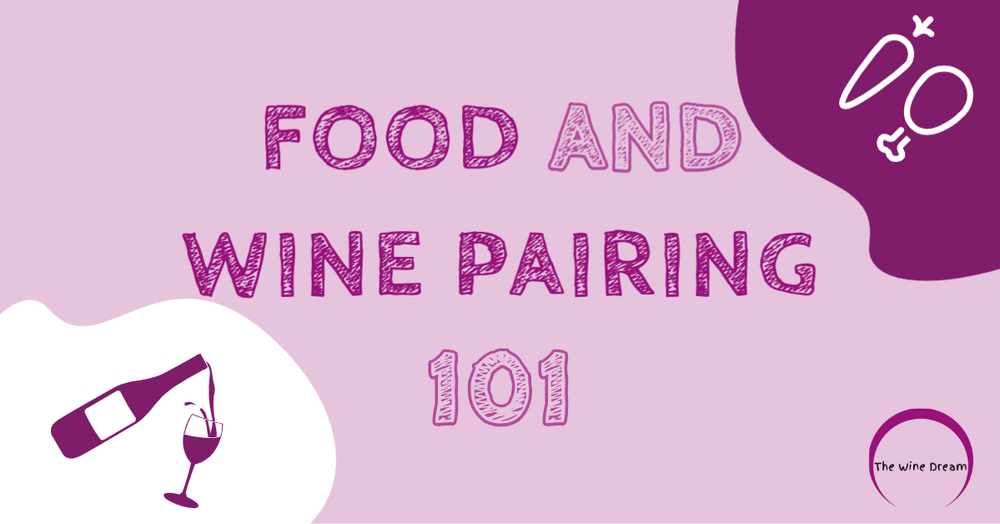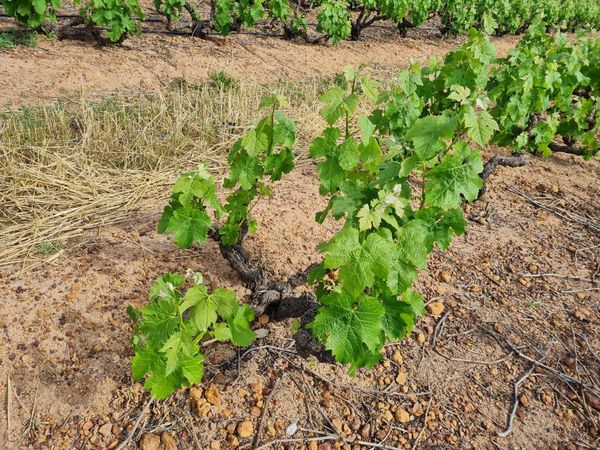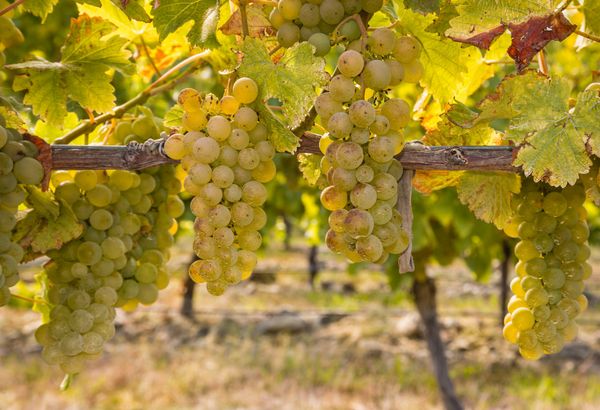Day 13 — Wine and Food Pairing 101
What an exciting topic we have on Day 13 of the lockdown. Now that you’ve learnt a thing or two about different wines, you should put the knowledge to the test and host a dinner party with fabulous wines (after the lockdown, please)! BUT, which wine will you serve with which dish? I’ve put together a couple of infographics and tips to help you pair your food and wine for your first post-lockdown dinner party.
While a lot of food can have a neutral or complimentary effect on the taste of your chosen wine, some foods and tastes tend to rather have a negative influence on your wine leading you to not drink a certain wine again. If you feel like doing a small home experiment to understand the influence of certain foods on wine, read to the end for the instructions.
Let’s take a look at what effects different tastes can have on your wine.
Sweet food
Sweet foods tend to be less wine-friendly and can cause your wine to taste bad.
The sweetness in your food can make your wine seem like there are a lot of tannins present, that the wine is very bitter or acidic and that the wine is not as sweet or fruity as you remember or expected it to be.
A general rule of thumb when pairing sweet foods and wine, is that your wine should be sweeter than your food.
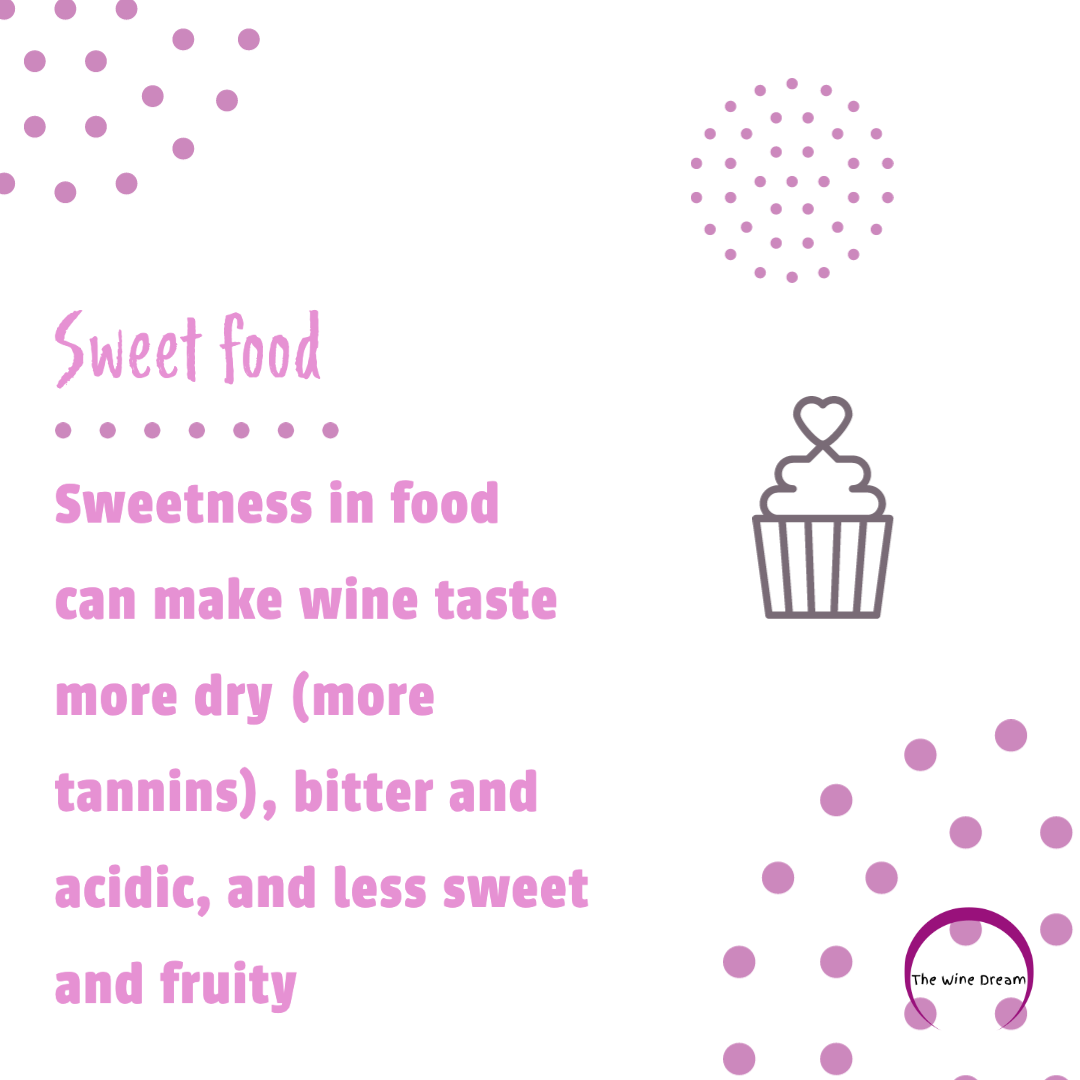
Umami food
Umami refers to our tongue’s receptivity to glutamates, such as Monosodium Glutamate (MSG). But, since MSG has a bad reputation, the Japanese term, Umami, has become widely accepted. Umami can be found naturally in many foods; most famously in seaweed and soy sauce, but also in tomatoes, spinach, mushrooms, cold cuts and meats in general.
Umami as a taste can be very difficult to isolate because it seems to always be present along with other tastes, such as salt, that can balance the negative effects of umami on your wine.
Foods that have a more prevalent umami taste can cause your wine to seem as though the tannins are higher, the wine has a bitter taste and a higher level of acidity. It can also lead your wine to taste less sweet and fruity.
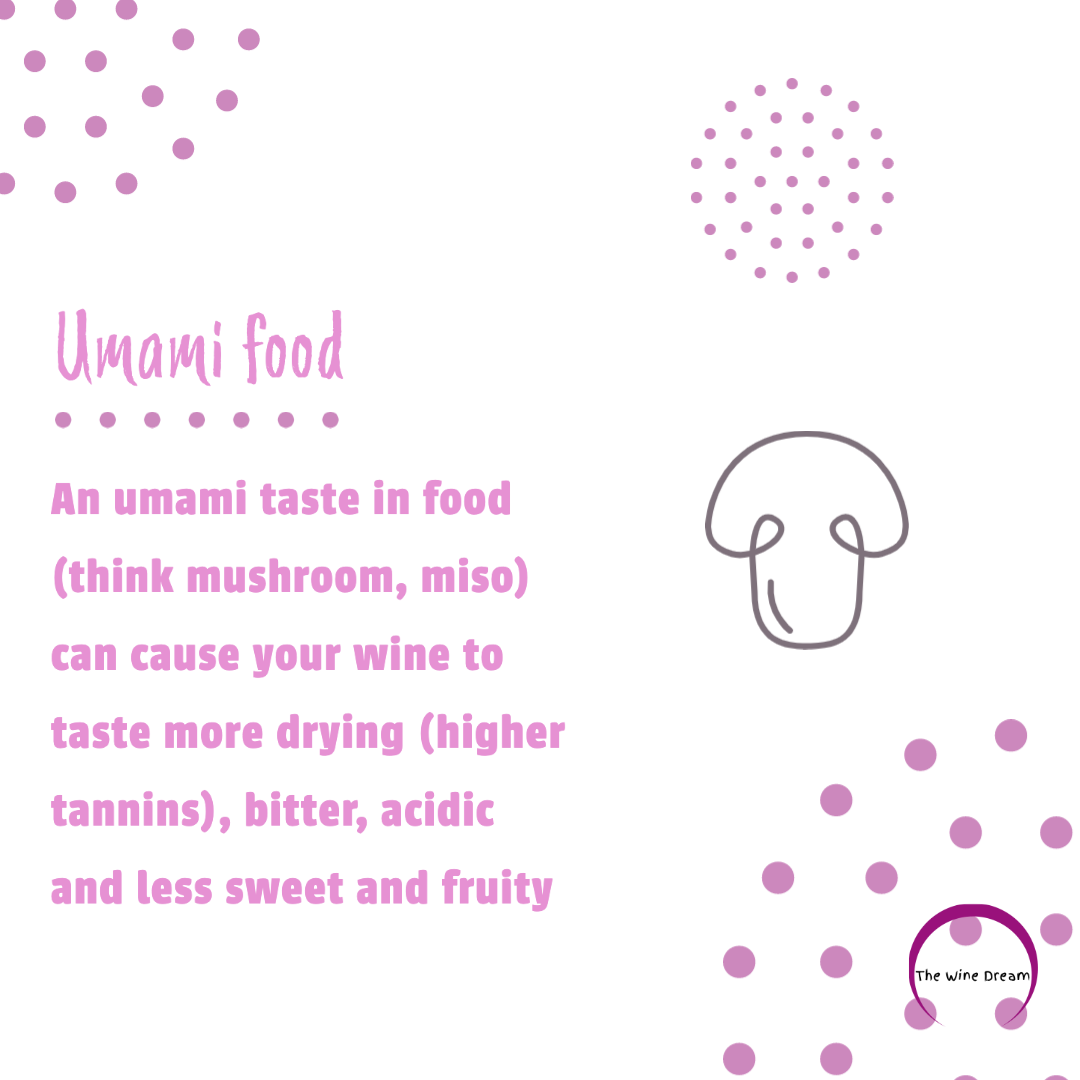
Acidity in food
Wine tends to love food with a higher level of acidity. Higher acidity in food can balance a wine that is also high in acidity and improve or enhance its fruitiness.
However, if the acidity in the food is much higher than the acidity of the wine it can make the wine seem less fruity.
Higher acidity in food can cause your wine to seem less acidic, less bitter and as though the wine has lower levels of tannins. It can also cause your wine to taste more sweet and more fruity.
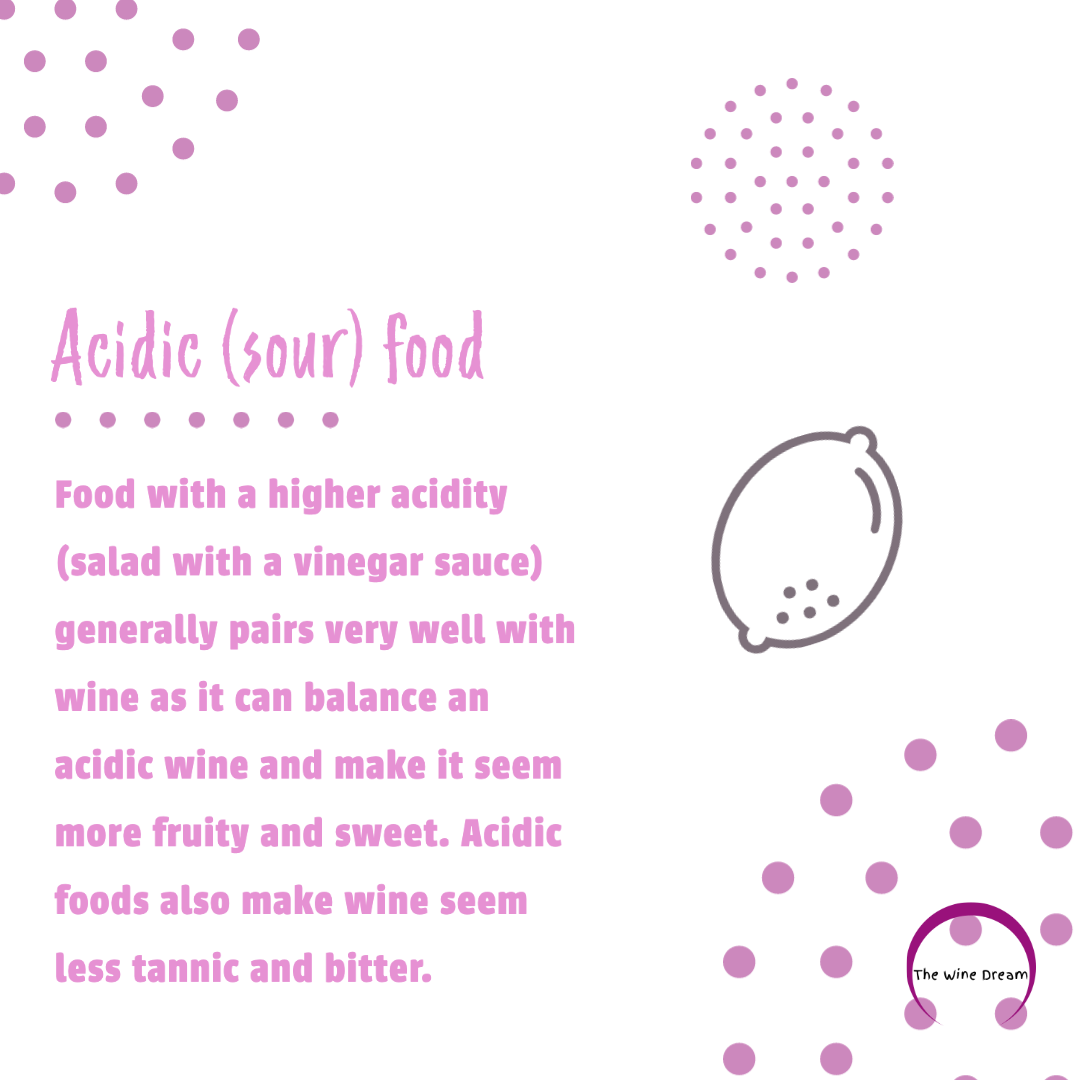
Salty food
Adding salt to your dish can improve both the food on your plate and the wine in your glass (if added in moderation).
Salt in your food can soften the tannins in your wine, make your wine seem less bitter and acidic, can improve the sweetness of the wine and make your wine seem like it has more body.
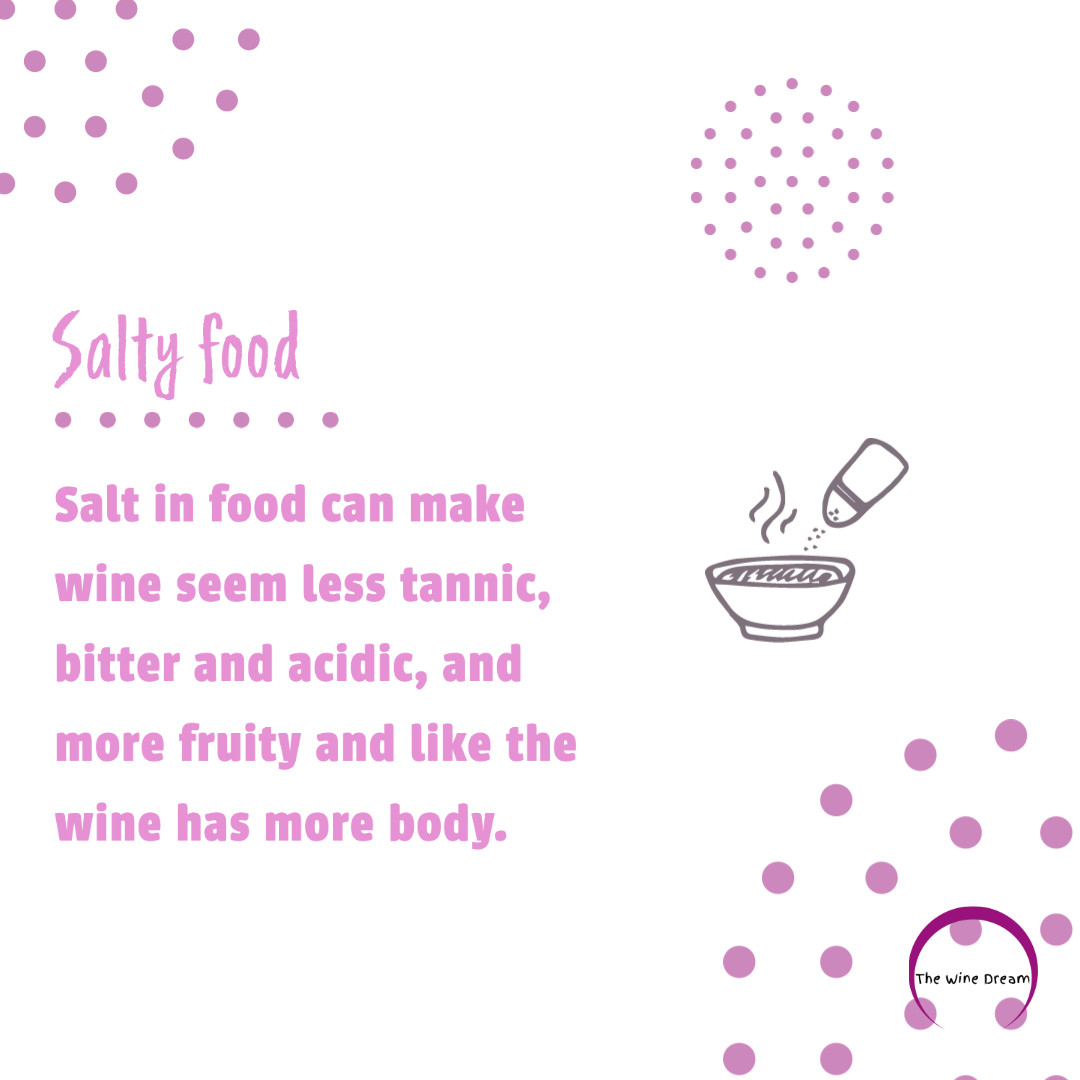
Flavour intense food
When pairing food and wine you should try to serve food and wine that are both equal in terms of flavour intensity.
Foods that are more flavourful than your wine will cause the wine to taste bland because the wine flavours will be completely overpowered by the food flavours.
Try pairing aromatic wines (e.g. Riesling) with dishes that are more flavourful. Indian curries often work well with a spicy Gewürztraminer or lightly oaked Sauvignon Blanc.
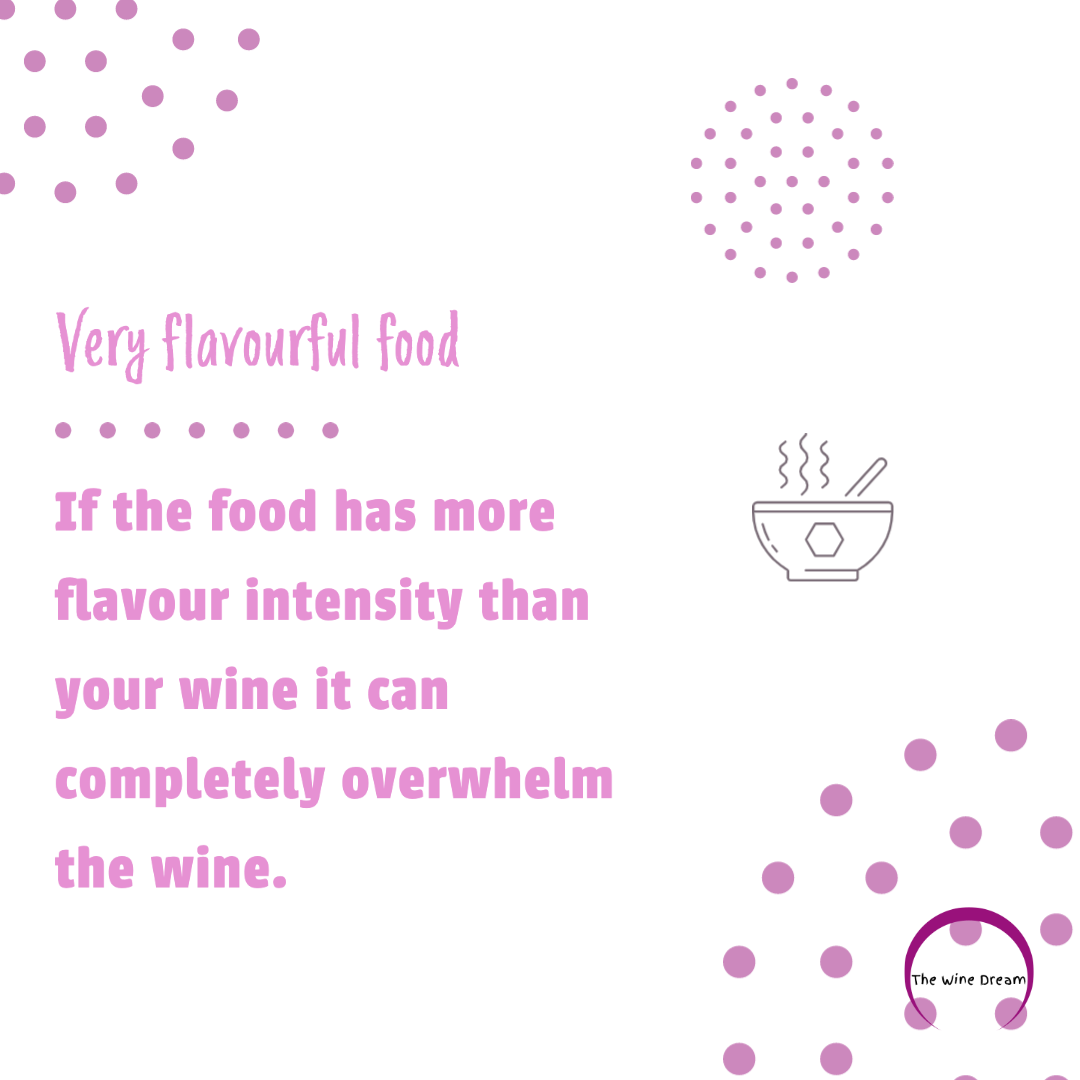
Oily/Fatty foods
Most people love the combination of wines with a higher acidity and fatty/oily foods. The main reason for this being that the acidity in the wine creates the sensation of ‘cutting’ through the fattiness and cleansing your palate.
Oily foods will make your wine seem less acidic.
You can try a crisp Sauvignon Blanc along with fried fish for a good example of how the flavours can balance each other.
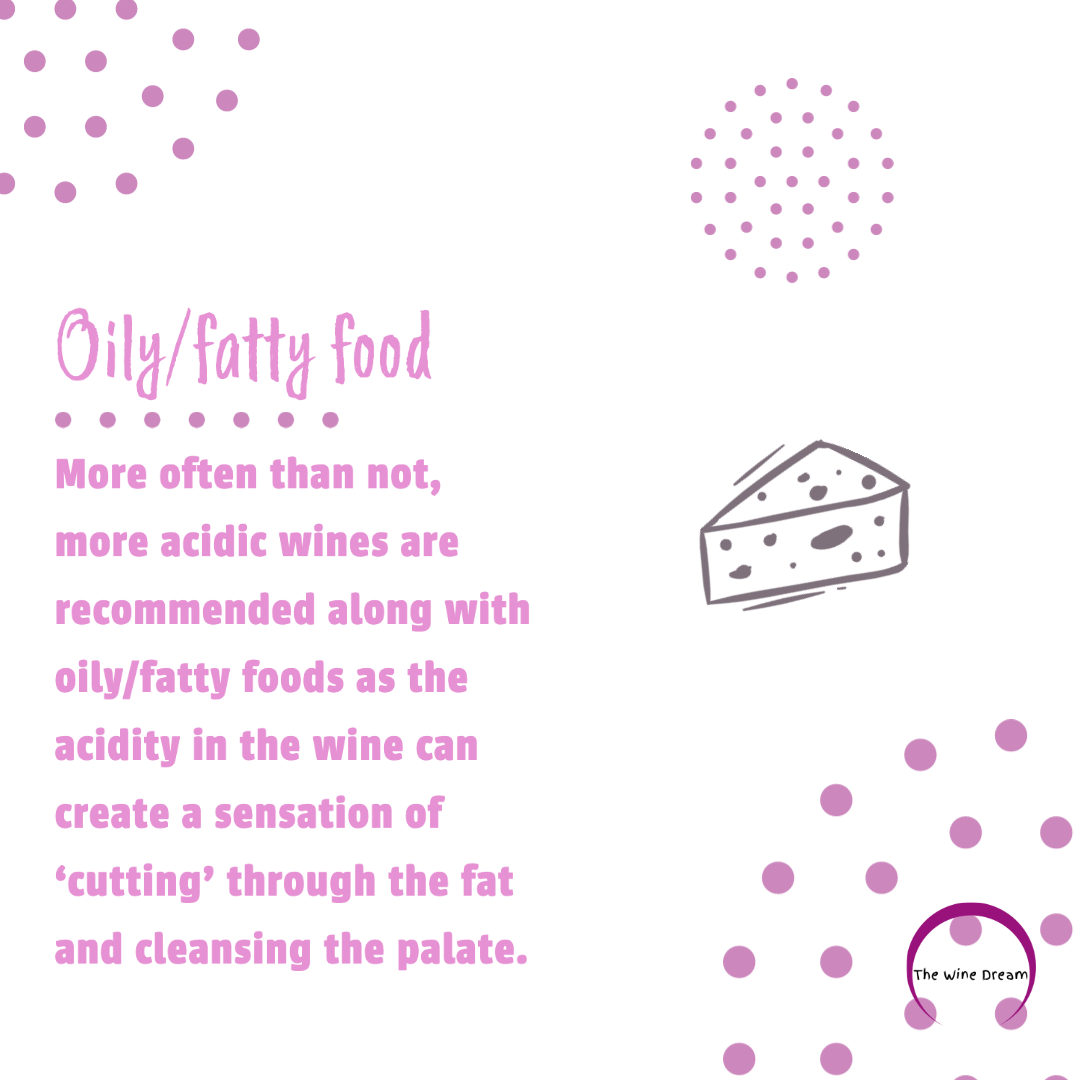
Hot food
If you like the burning sensation that you feel when eating hot (chilli) foods, you should know that alcohol can increase that feeling.
If you want to feel the heat, drink wine with a higher alcohol level, otherwise it might be best to drink a light wine or non-alcoholic beverage.
A cold, sweet wine that is low in alcohol can counteract the burn of spiciness in your food.
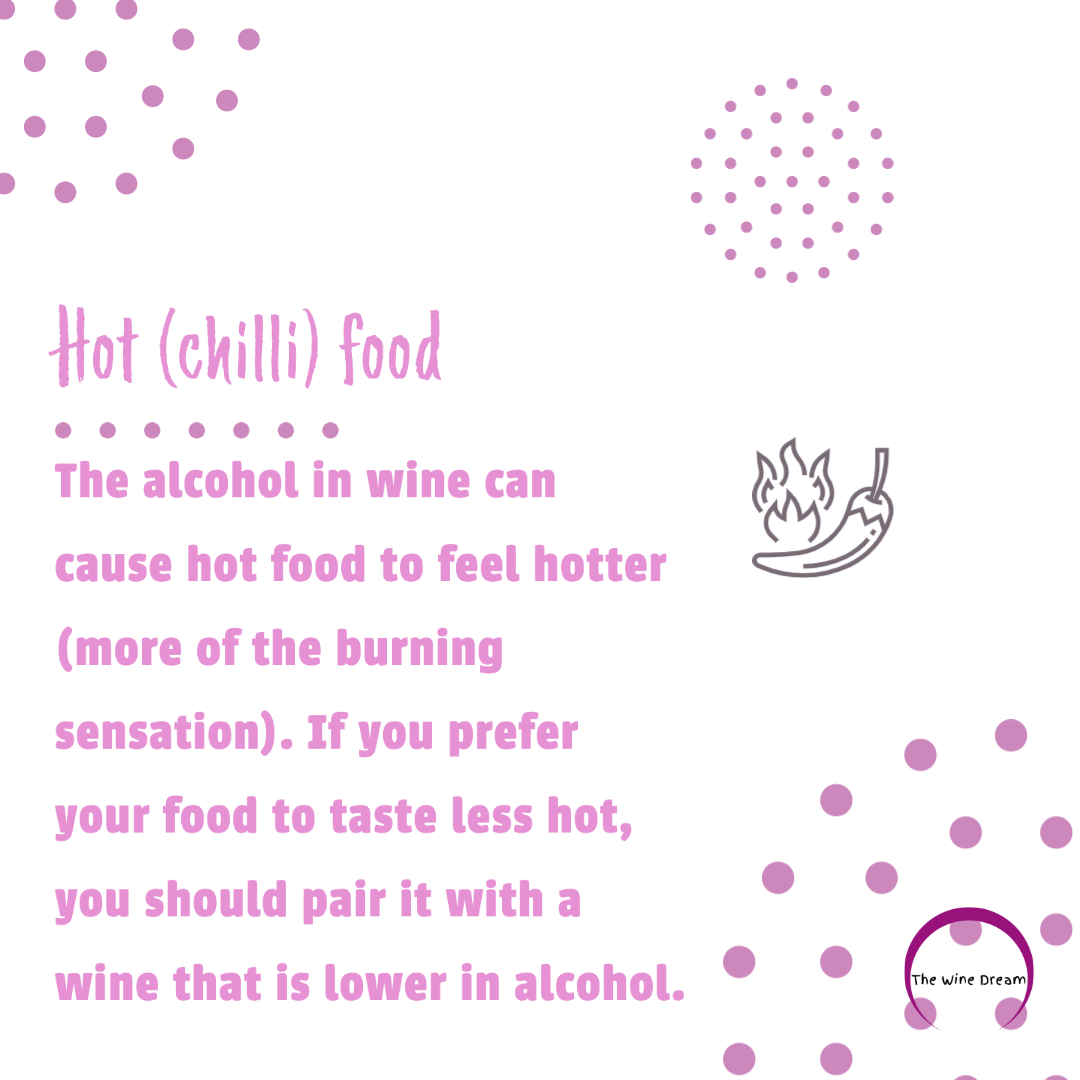
At home taste test
If you feel bored and would like to do some wine tasting with an educational purpose you can try the following at home.
Pour yourself a glass each of the following:
- white wine with higher acidity (Sauvignon Blanc)
- light red wine (Pinot Noir)
- full-bodied red wine (Cabernet Sauvignon)
- fragrant sweet wine (Riesling, Gewürztraminer)
Grab a plate and put the following on there:
- something sweet (any jelly sweet, some jam)
- something salty (a pinch or two of salt, plain salted chips)
- something acidic (slice of lemon, vinegar, vinaigrette)
- something umami (piece of dried seaweed, cooked mushroom, plain slice of steak)
Now, take a sip of each wine and write down your tasting notes. Then, a bite of food followed by a sip of wine, make notes of how the food changed the wine. Do this for all of the combinations.
Which combinations did you enjoy and what will you try again?
This is a very simple at home tasting and you can add and improve on it as you please. Add some chilli, cheese, try different sauces with your steak or mushrooms… the possibilities are endless!
Thanks for reading! I hope that you have enjoyed this article and that you will try this fun activity at home.
Until next time. Stay home, stay safe and stay healthy.
Follow The Wine Dream on Instagram for more photos and tasting notes.

